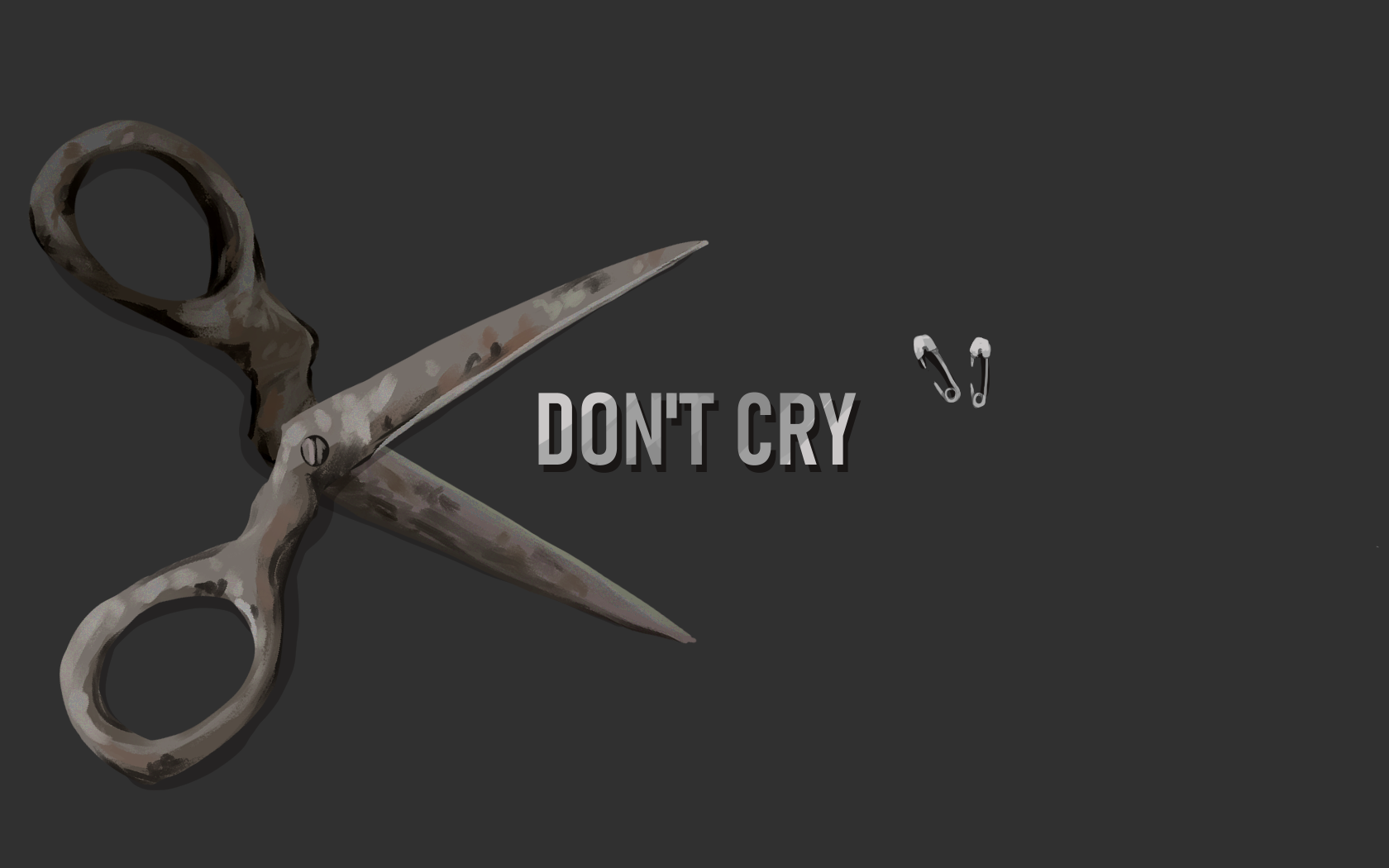SPOILERS BELOW
Don't Cry is a horror story. It may allude to, imply, describe or show the following:
- Animal abuse
- Child abuse and/or neglect
- Animal death
- Violence
- Guns
- Blood and gore
- Vomiting
- Major character death
- Decapitation
- Child death
- Body horror
- Impalement
- Police brutality
- Ableism
- Transphobia and/or cissexism
- Body dysmorphia and/or gender dysphoria
- Dehumanization
The story does NOT contain any sexual violence or abuse, or any sexual content of any kind.
These warnings are kept vague on purpose to minimise spoilers. Below, I will describe how each subject appear in the story as non-graphically as I can. These will contain spoilers. Click to reveal each one. I would recommend avoiding the ones you do not feel the need to be warned about if you want to preserve some of the mysteries.
ANIMAL ABUSE:
This is implied through symbolism to have been committed by an unnamed character who is found in Silent Hill.
CHILD ABUSE AND/OR NEGLECT:
While not outright neglectful nor abusive, the main character is shown to have many shortcomings as a father. In one ending, this escalates into outright abusive behaviour.
ANIMAL DEATH:
Several monsters take animal-like forms. Monsters in the shape of dogs and insects are killed in the story.
VIOLENCE:
The story contains heavy violence. Monsters harm humans, humans harm monsters, monsters harm each other. There are several graphic fight scenes.
GUNS:
Many monsters get shot. Someone aims a gun at and threatens to shoot someone on several occasions.
BLOOD AND GORE:
The story contains descriptions of blood and gore. Dead monsters are described in detail. There are descriptions of a human corpse and of blood. A corpse gets eaten by a monster.
VOMITING:
A character is mentioned to throw up.
MAJOR CHARACTER DEATH:
A companion character is killed. This character is a construct of Silent Hill, but treated as a person by the narrative. They have been presented as a nonbinary teenager up until this point. In one ending, another major character is killed.
DECAPITATION:
The Beheader is a reoccurring monster throughout the story. Several monsters get decapitated. Major character(s) gets decapitated.
CHILD DEATH:
A companion character described as a teenager dies. The deaths of the monsters known as ‘baby dolls’ may also count in this regard.
BODY HORROR:
There are graphic descriptions of body horror throughout the story.
IMPALEMENT:
One character gets stabbed through the neck and torso. In one ending, a major character is impaled.
POLICE BRUTALITY:
symbolism surrounding the character of craig implies this. As the story goes on, he becomes more and more antagonistic, and tries to shoot the main character and his companion. He also indiscriminately kills every monster he passes. Past systematic violence is only implied, not shown.
ABLEISM:
The main character occasionally refers to the antagonistic cop as ‘crazy’ or ‘insane’. A companion character pushes against this, but it is not necessarily resolved.
TRANSPHOBIA AND/OR CISSEXISM:
Don’t Cry is a story about being transgender. It contains misgendering of closeted characters, lack of understanding of nonbinary identities, microaggressions, deadnaming, and cissexism. A character who is implied to be nonbinary dies. A transgender woman is shown to an unaware person to be in the shape of a monster. In one ending, a character’s refusal to let go of his daughter’s old identity transforms him into a monster, and his daughter is forced to kill him.
BODY DYSMORPHIA AND/OR GENDER DYSPHORIA:
Implied through symbolism. The cis male character is faced with a woman's bathroom that changes to being broken and dirty when he steps into it. In the bathroom, there is a mirror that shows his more traditionally masculine features as warped into a monster.
DEHUMANIZATION:
Don't Cry plays with the definition of people and monsters. From the main character's point of view, some people look like monsters, and some monsters look like people. This is most visible in how he sees his own daughter as being a monster until he realizes who it is, as well as seeing manifestations of her past selves or attempts to be male as looking perfectly like humans. In one ending, the main character is treated like and shown to act like a monster even though his appearance has not changed.
The story was written by a queer person who finds comfort and empowerment in reclaiming the monstrous, the other, that so often mirrors us in fiction. If you do not find this empowering, this story is not for you.
The daughter is never described as looking monstrously masculine. However, the cisgender father is, on one occasion, when he is faced with a metaphor for body dysphoria.

